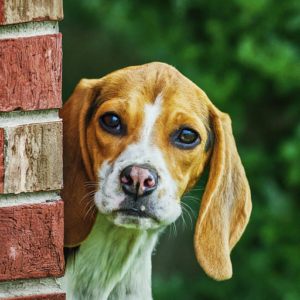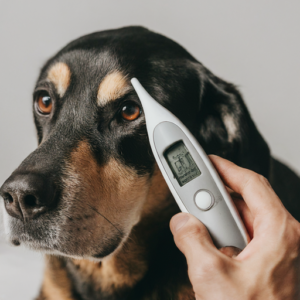HERDING BEHAVIOR ON DOGS
Crowding Canines:
Experts of the DevelopmenCrowding canines are and entrancing gathering of canines with a profoundly instilled intuition: the craving to control and guide the development of different creatures. Reproduced for a really long time to help shepherds with overseeing animals, these canines have a novel mix of knowledge, physicality, and center that makes them important accomplices on the homestead.

A characteristic drive to assemble, control, and safeguard animals.
Sharpness and knowledge: The capacity to grasp the shepherd’s orders and expect the necessities of the group.
Physicality and dexterity: The endurance and speed important to stay aware of dynamic creatures.
Teachability: An eagerness to learn and answer signs.
After some time, unmistakable crowding canine varieties arose, each with their own specific grouping styles.
advanced world. These canines succeed in different canine games like dexterity, flyball, and sheepdog preliminaries, which channel their crowding impulses into a tomfoolery and serious climate.
For pet people with crowding canine varieties, it is vital to grasp these imbued ways of behaving.
While Crowding Turns into an Irritation
Grouping senses can appear in unfortunate ways in a non-ranch setting. This is the way to recognize and oversee grouping conduct in pet canines:
Indications of Grouping:
Post for revolving around, pursuing, nipping at impact points (of individuals or different pets!), yapping, and extraordinary gazing. These ways of behaving are frequently aimed at youngsters, joggers, or even vehicles.
Redirection and Prize: The key is to divert your canine’s concentration with uplifting feedback. At the point when they show grouping ways of behaving, give them a toy or treat in return for their consideration.
Exercise and Excitement: Crowding canines are high-energy breeds that require a lot of mental and actual feeling. Everyday strolls, recess, and intelligent canine toys can take care of tire them and diminish the inclination to group.

Proficient Preparation:
now and again, proficient canine preparation can be valuable, particularly on the off chance that your canine’s crowding conduct is leading to huge issues.
By understanding your crowding canine’s normal impulses and giving them the legitimate activity and preparing, you can make an agreeable and satisfying coexistence.
Breeds Reared to Group
Here are probably the most campus
grouping canine varieties:
Australian Dairy cattle Canine
German Shepherd Canine
Shetland Sheepdog
Pembroke Welsh Corgi
Belgian Malinois
Beauceron
Keep in mind, even non-crowding breeds might display grouping ways of behaving somewhat. Understanding these senses is helpful for all canine proprietors, yet particularly those with crowding breeds or dynamic, wise actually

For pet people with crowding canine varieties, it is vital to grasp these imbued ways of behaving.
While Crowding Turns into an Irritation
Grouping senses can appear in unfortunate ways in a non-ranch setting. This is the way to recognize and oversee grouping conduct in pet canines:
Indications of Grouping:
Post for revolving around, pursuing, nipping at impact points (of individuals or different pets!), yapping, and extraordinary gazing. These ways of behaving are frequently aimed at youngsters, joggers, or even vehicles.
The key is to divert your canine’s concentration with uplifting feedback. At the point when they show grouping ways of behaving, give them a toy or treat in return for their consideration.
Exercise and Excitement:
Crowding canines are high-energy breeds that require a lot of mental and actual feeling. Everyday strolls, recess, and intelligent canine toys can take care of tire them and diminish the inclination to group.
Proficient Preparation:
now and again, proficient canine preparation can be valuable, particularly on the off chance that your canine’s crowding conduct is leading to huge issues.
By understanding your crowding canine’s normal impulses and giving them the legitimate activity and preparing, you can make an agreeable and satisfying coexistence.
Breeds Reared to Group
Here are probably the most famous grouping canine varieties:

Various Strokes for Various People
Crowding canines accomplish their noteworthy control of domesticated animals through different methods:
Looking at: These canines utilize extreme gazes to coordinate the development of the group. Line Collies are popular for their hypnotizing eye-grouping capacities.
Following: By taking on a low, savage stance, crowding canines can unobtrusively constrain creatures to move in a particular course.
Surrounding: Grouping canines might circle the crowd, keeping them smaller and moving them as a unit.
Woofing: Short, sharp barks can be utilized to alarm the group or to urge them to move quicker.
Nipping:
While not generally important, some crowding canines might nip at the impact points of animals to direct their development. This conduct ought to be controlled and not forceful.
The particular crowding style utilized by a canine variety frequently relies upon the kind of animals they were reared to make due. For example, Collies, reared for crowding sheep, will generally utilize a more delicate methodology with eye-grouping and following, while breeds like the Australian Dairy cattle Canine, utilized for crowding cows, may integrate more nipping because of the sturdier idea of their charges.
Grouping in the Advanced World
While grouping canines are as yet fundamental accomplices for ranchers and farmers, their abilities can be adjusted to different pursuits in the advanced world. These canines succeed in different canine games like dexterity, flyball, and sheepdog preliminaries, which channel their crowding impulses into a tomfoolery and serious climate.
How do you Identify herding Behavior
Identifying herding behavior in dogs involves recognizing specific actions and tendencies that are characteristic of the herding instinct. These behaviors are deeply ingrained and often manifest even in non-working environments. Here’s how you can spot typical herding behaviors in dogs:
### 1. **Chasing and Gathering**
– Herding dogs often display a natural tendency to chase moving objects, whether it’s animals, people, cars, or even a ball during play. This is a part of their instinct to gather and control the movement of the flock.
### 2. **Circling and Pacing**
– You might notice a herding dog circling around other animals or people, which is part of their strategy to keep groups together. They may also pace along the perimeter of yards or parks, patrolling the borders much like they would with a flock.
### 3. **Nipping**
– In an attempt to control movement, herding dogs may gently nip at the heels of other animals or humans, especially children when they run. This behavior mimics the way they would herd livestock.
### 4. **Stalking**
– Herding dogs might display a stalking behavior, lowering their bodies and creeping closer to the ground as they approach their “target.” This behavior helps them get closer to livestock without startling them.
### 5. **Intense Focus**
– Herding breeds often show an intense focus when they are on a task. They can become so fixated on their “job” that they might ignore distractions around them.
### 6. **Barking**
– Barking is a common tool used by herding dogs to control and direct animals. In non-working scenarios, they might bark more frequently or loudly in play or when they perceive a need to organize people or other pets.
### 7. **High Energy and Work Ethic**
– Although not a behavior per se, a high energy level and a noticeable desire to be busy and engaged are typical of herding dogs. They are happiest and most well-behaved when they have tasks to accomplish or challenges to overcome.
### Managing Herding Behavior
– **Training**: Professional training can help channel herding instincts productively and safely. Training should focus on obedience and recall to ensure you can control your dog in situations where their herding behavior might be inappropriate or unsafe.
– **Exercise and Mental Stimulation**: Providing plenty of physical exercise and mental stimulation is essential. Sports like agility, flyball, or even herding trials (if available) can be beneficial.
– **Socialization**: Early and ongoing socialization helps herding dogs learn how to interact appropriately with other animals and people.
Understanding and managing herding behavior positively is crucial to ensure that these instincts do not lead to problematic behaviors. With the right guidance and activities, herding dogs can be joyful and well-adjusted companions.






